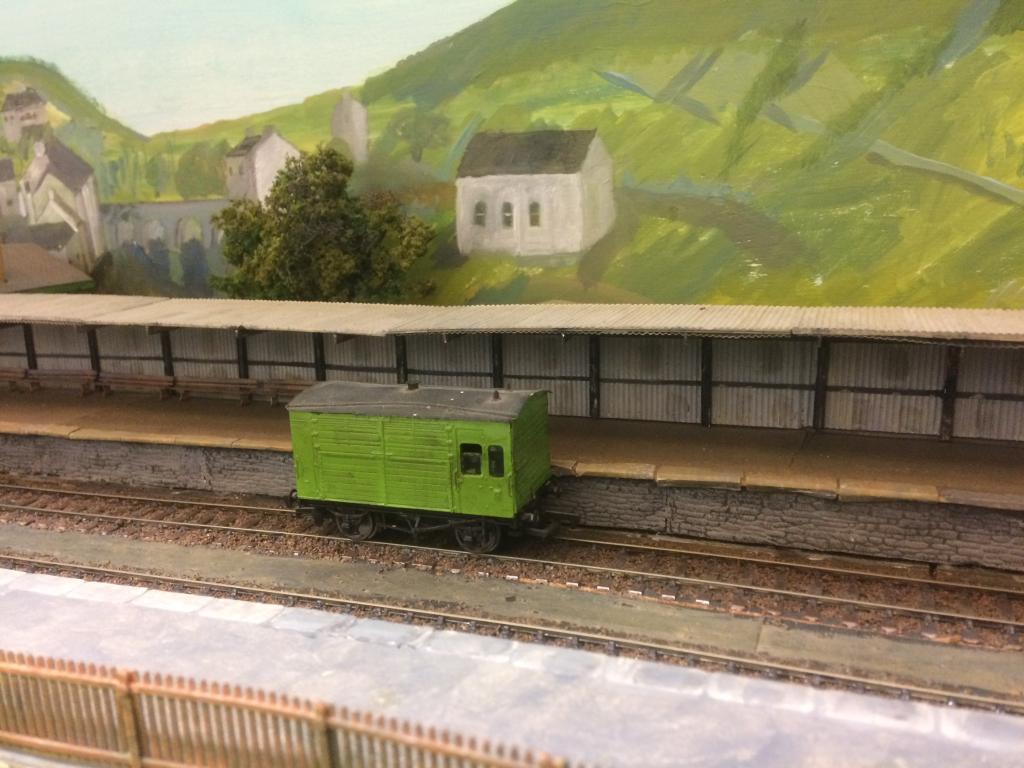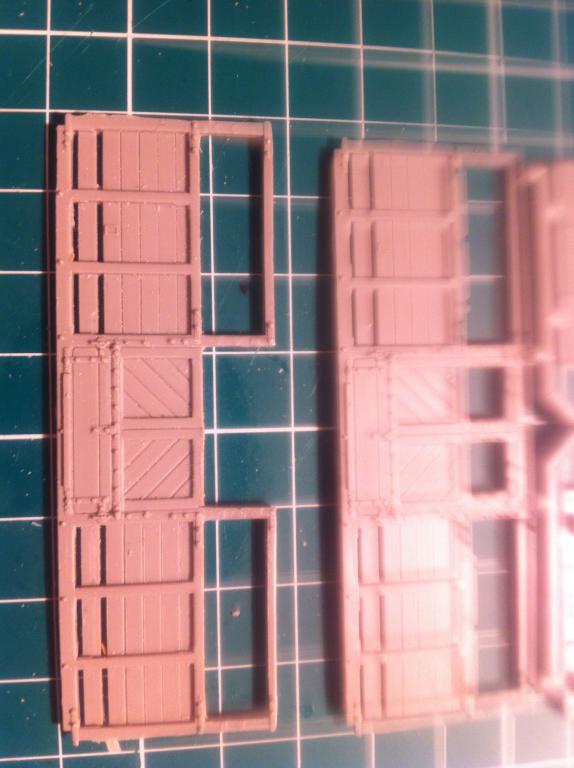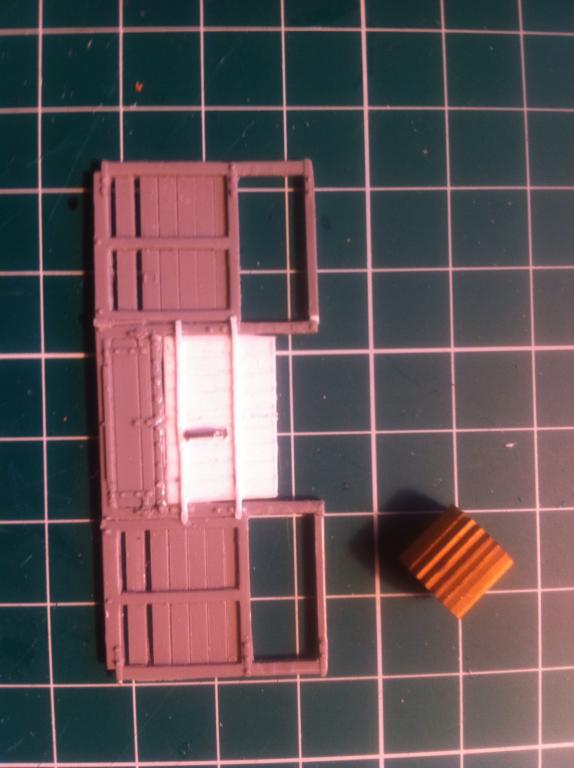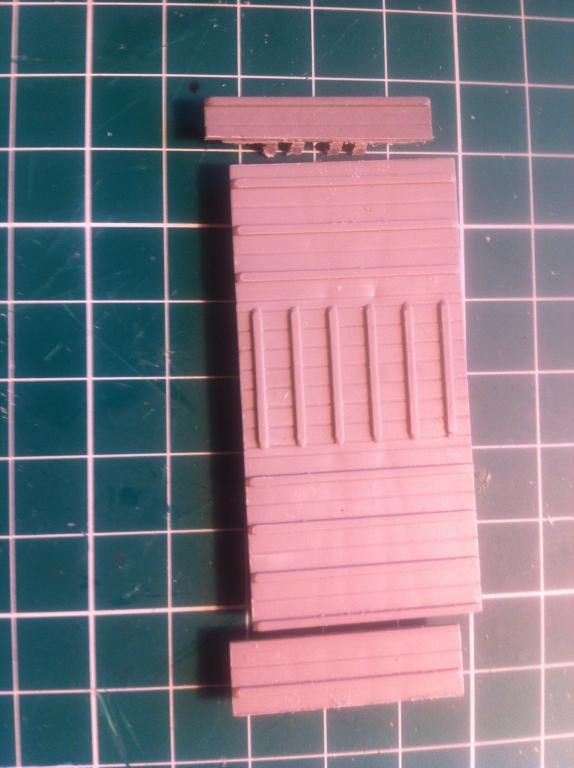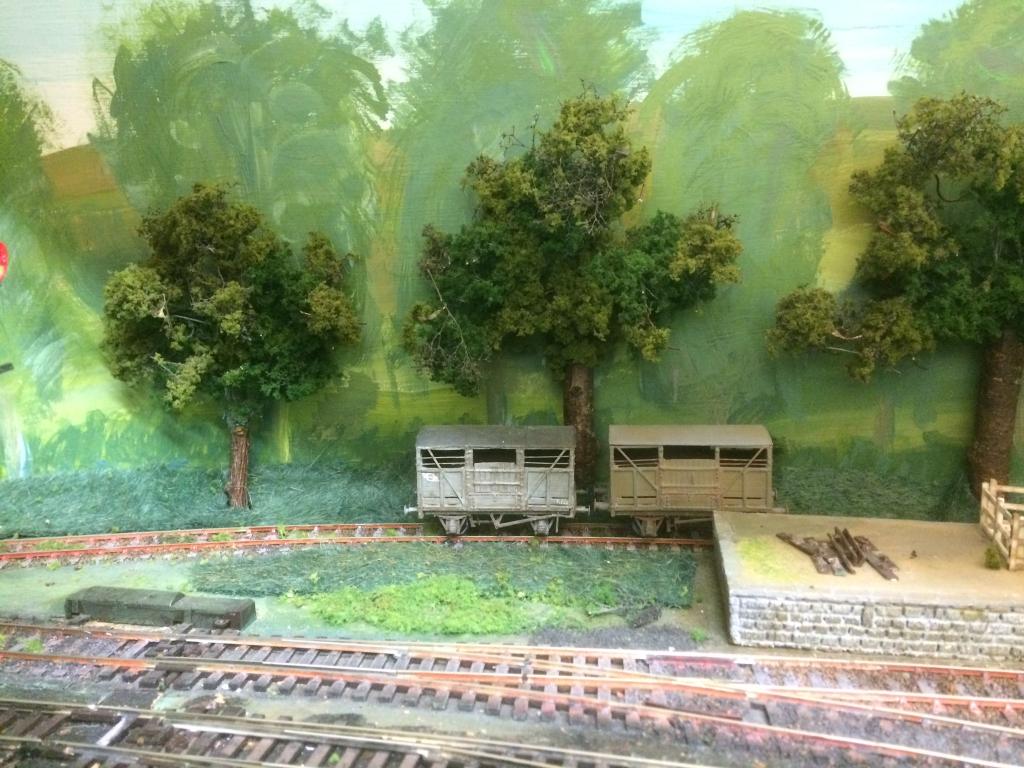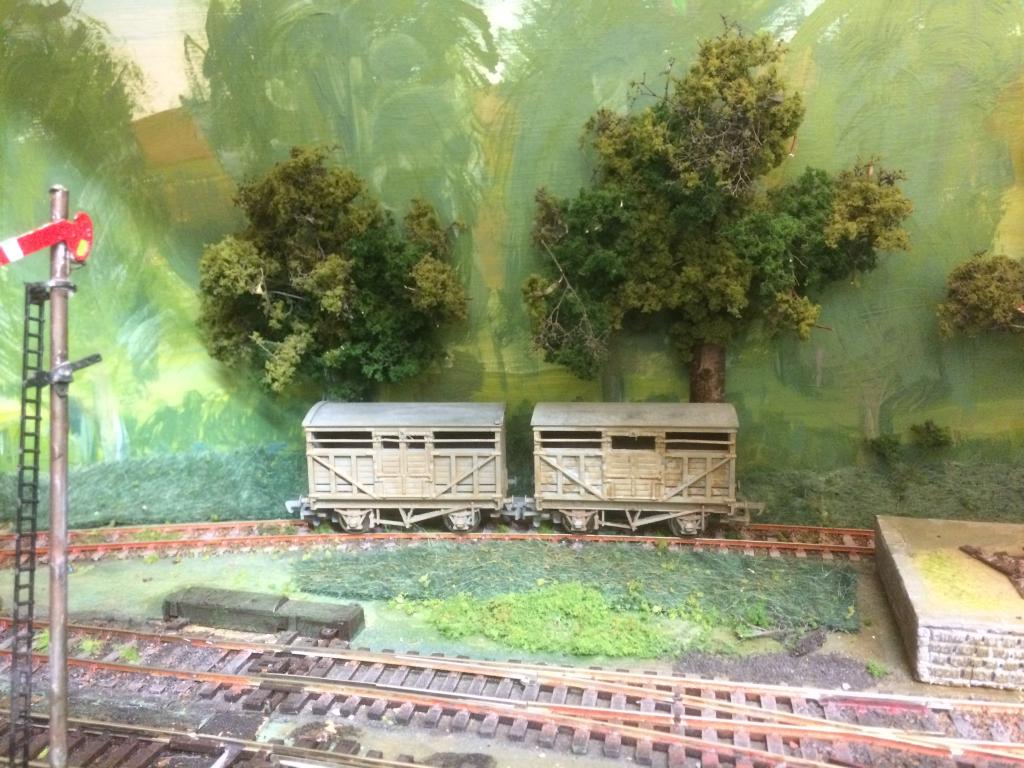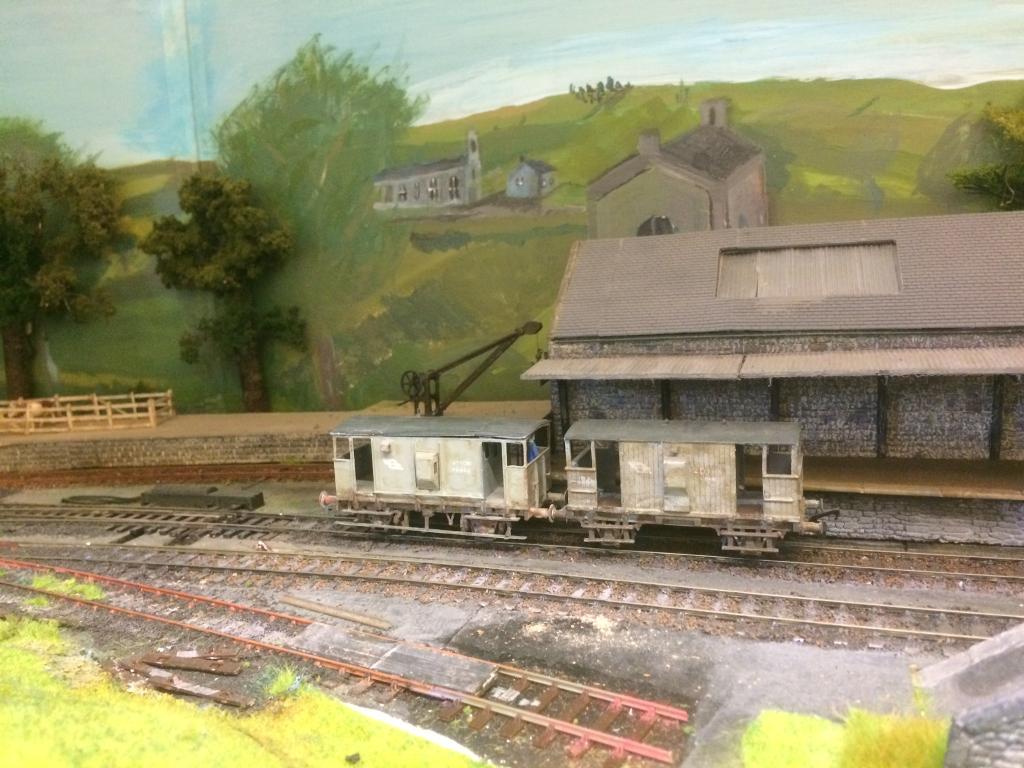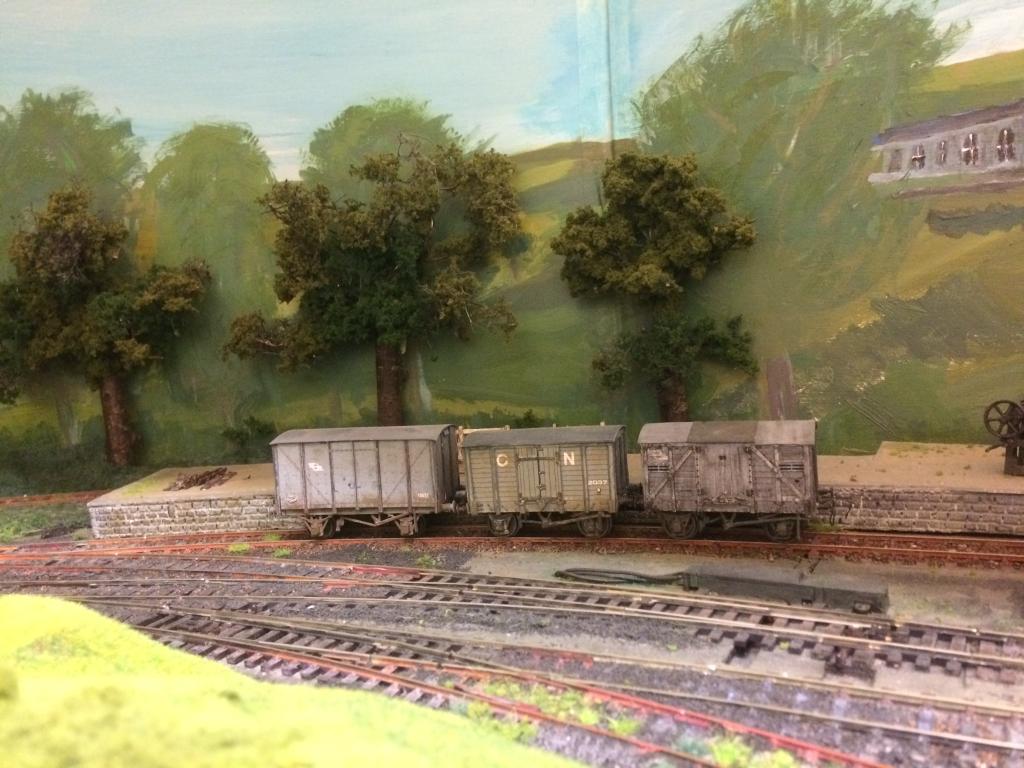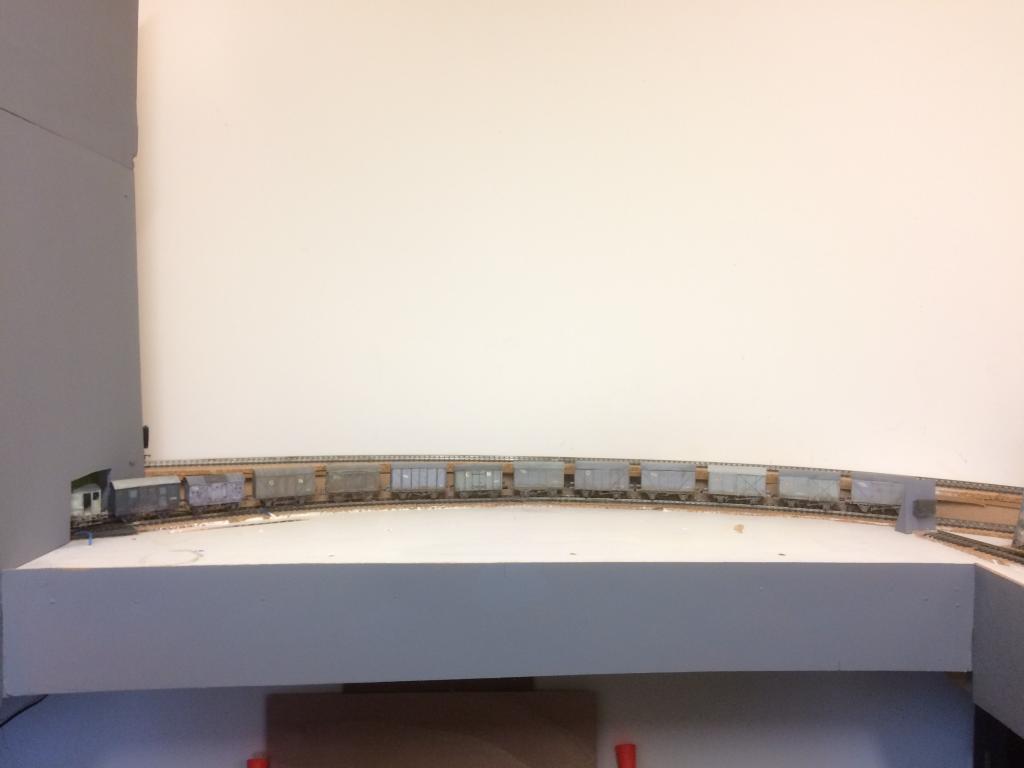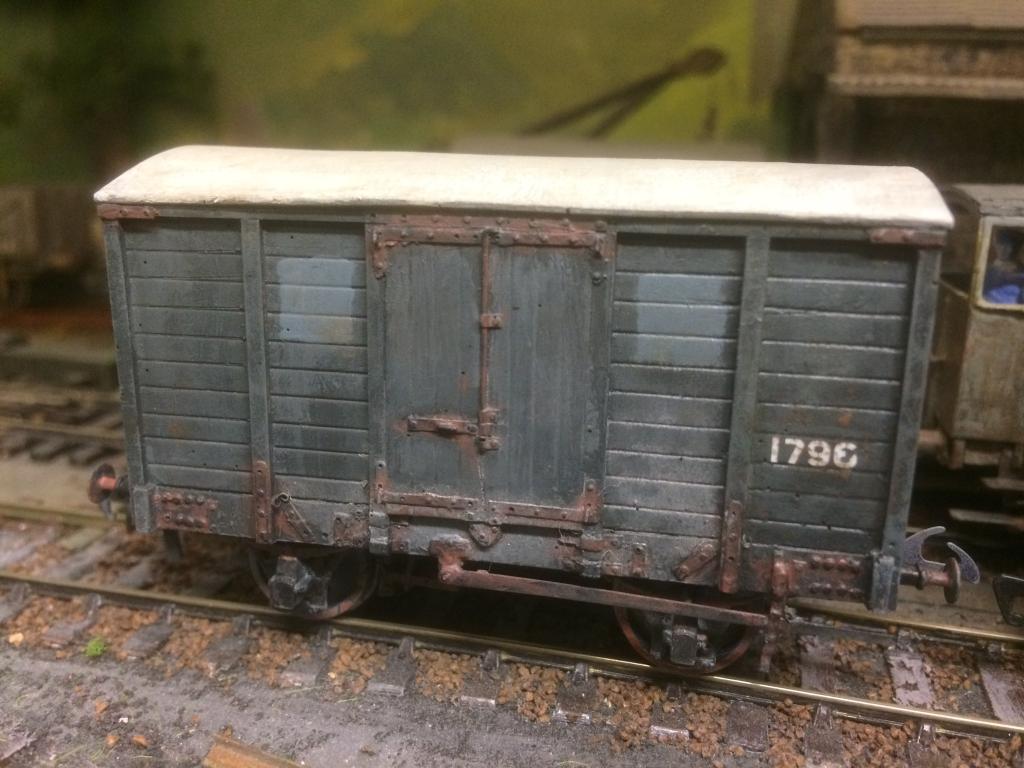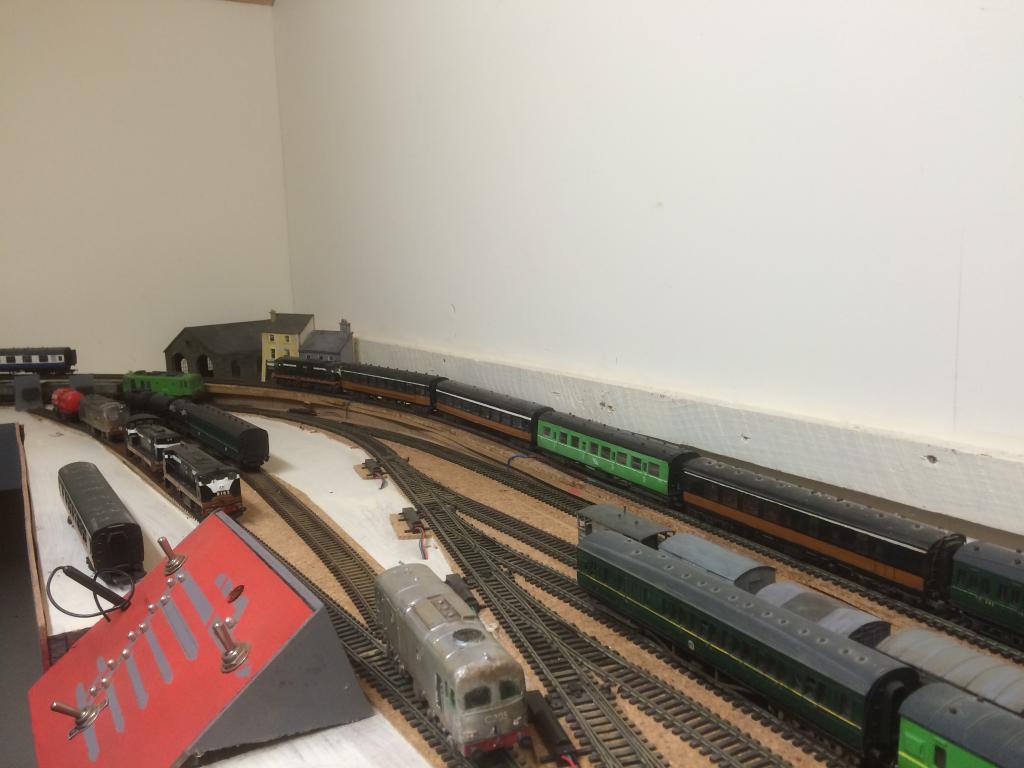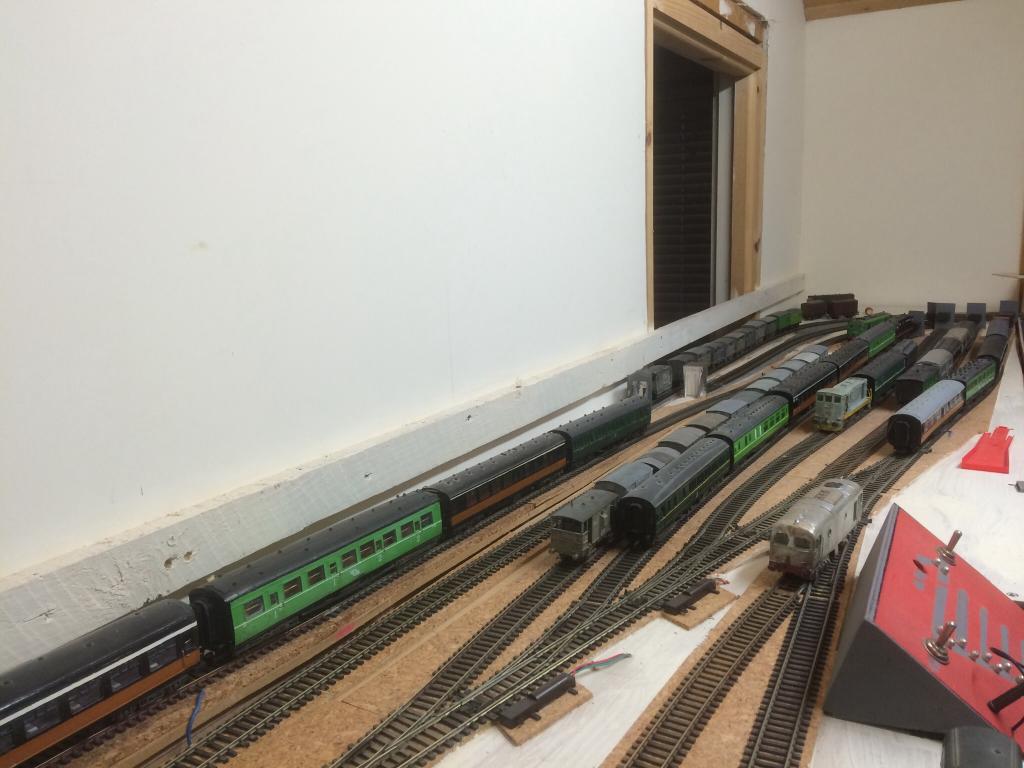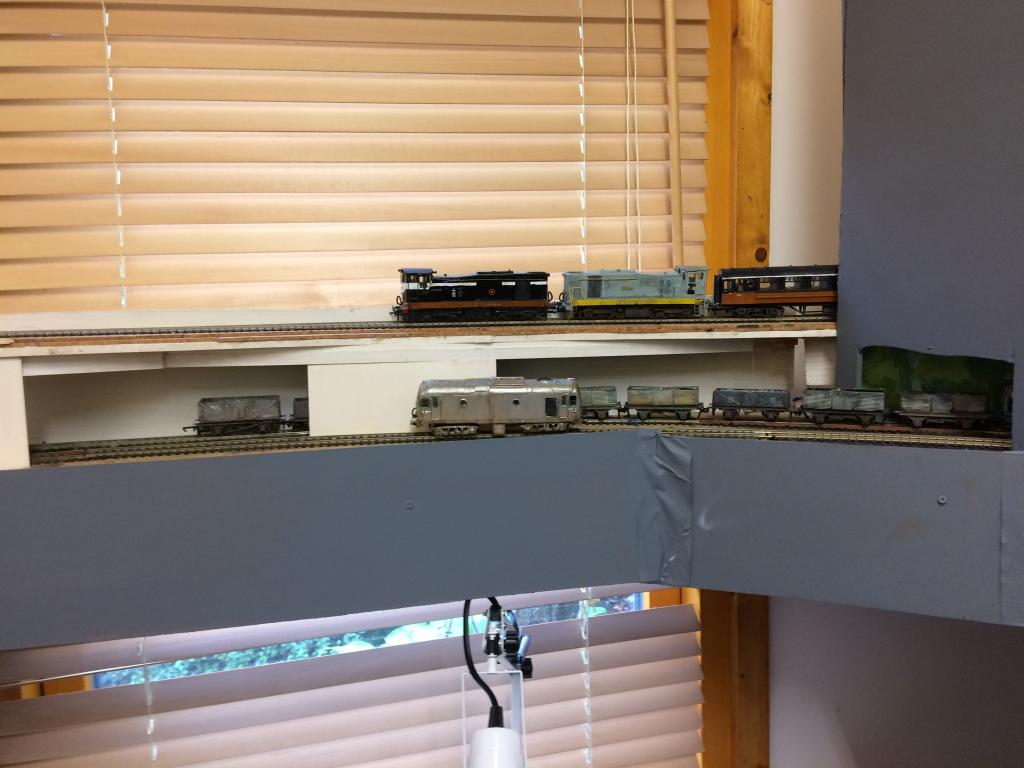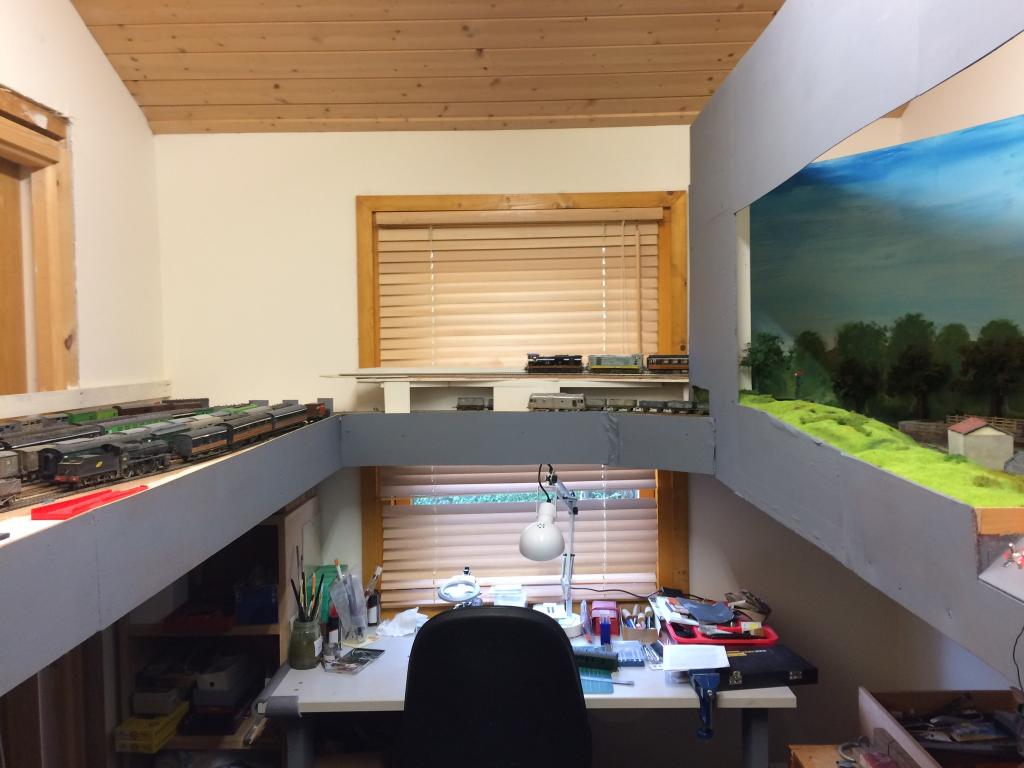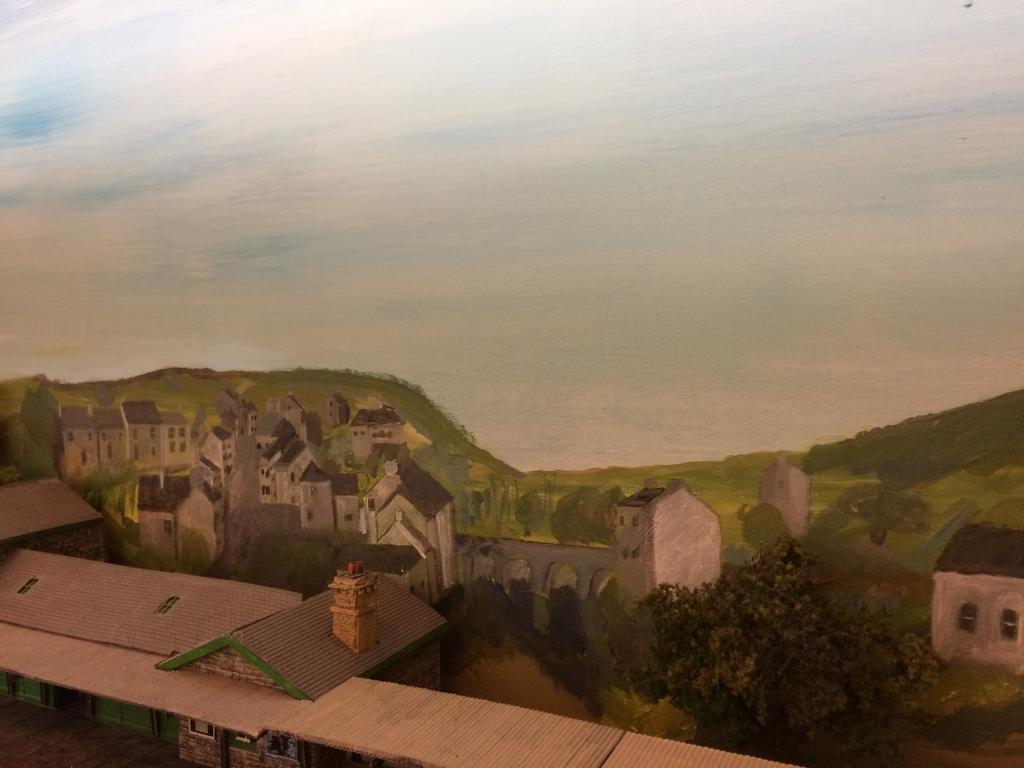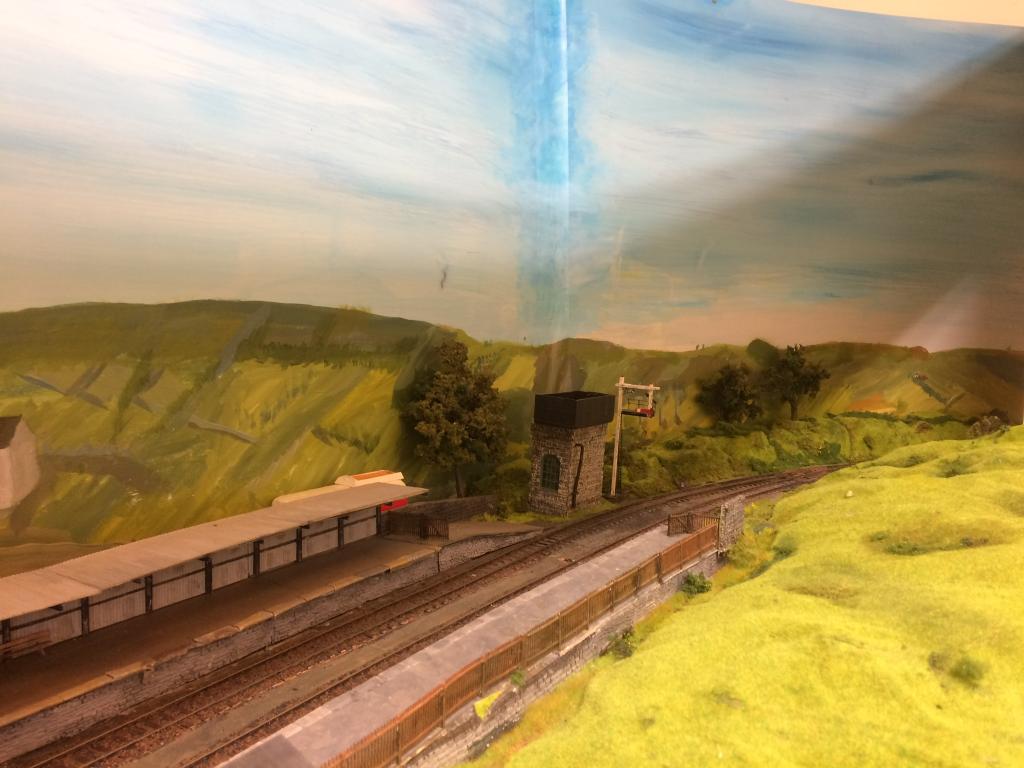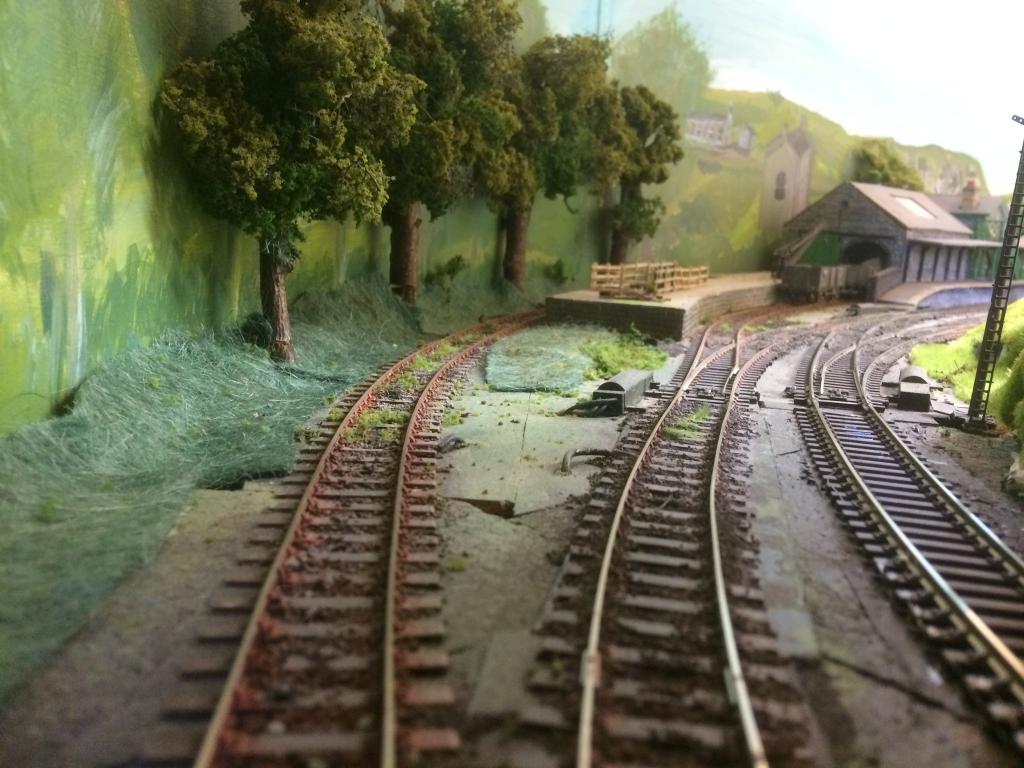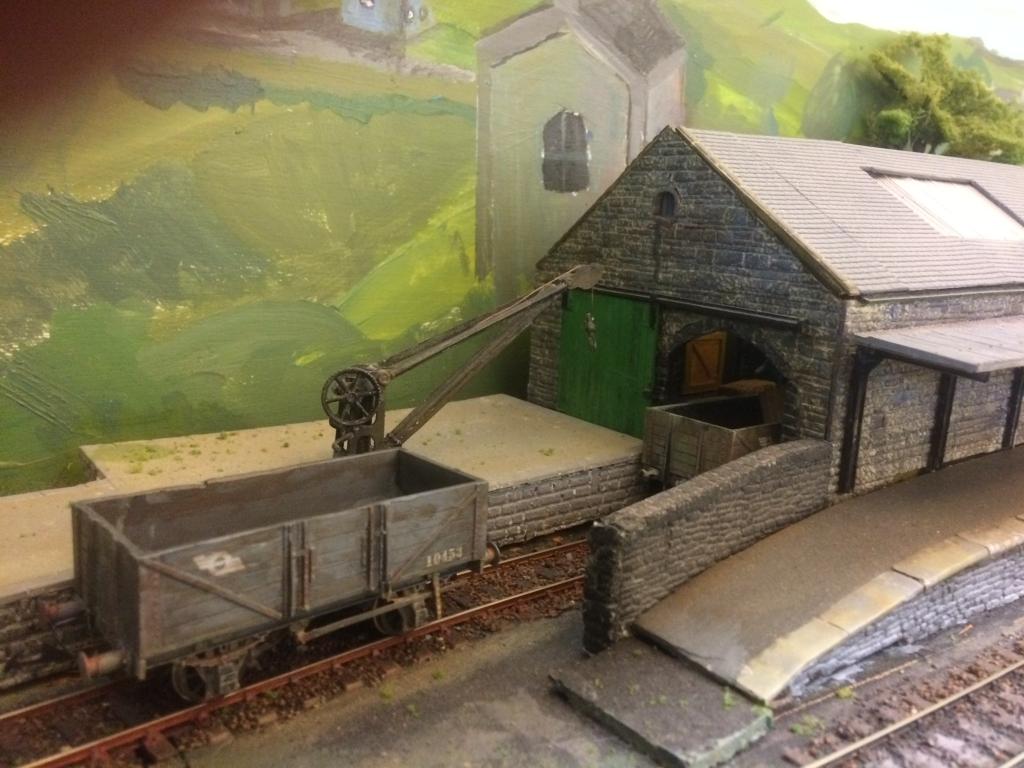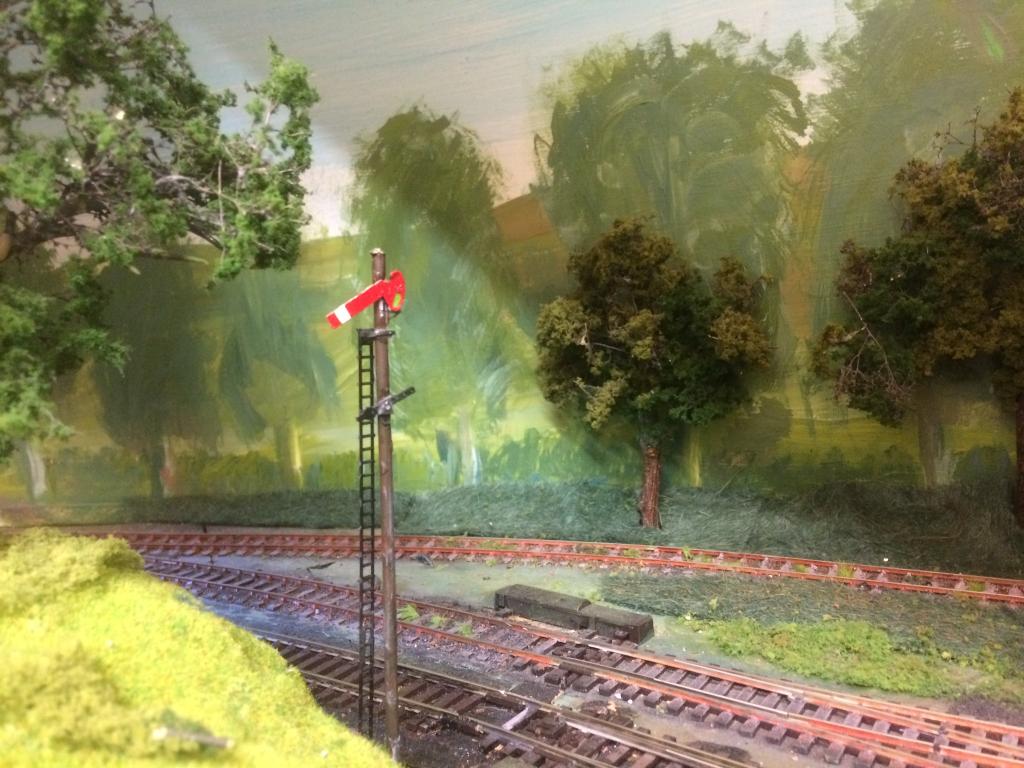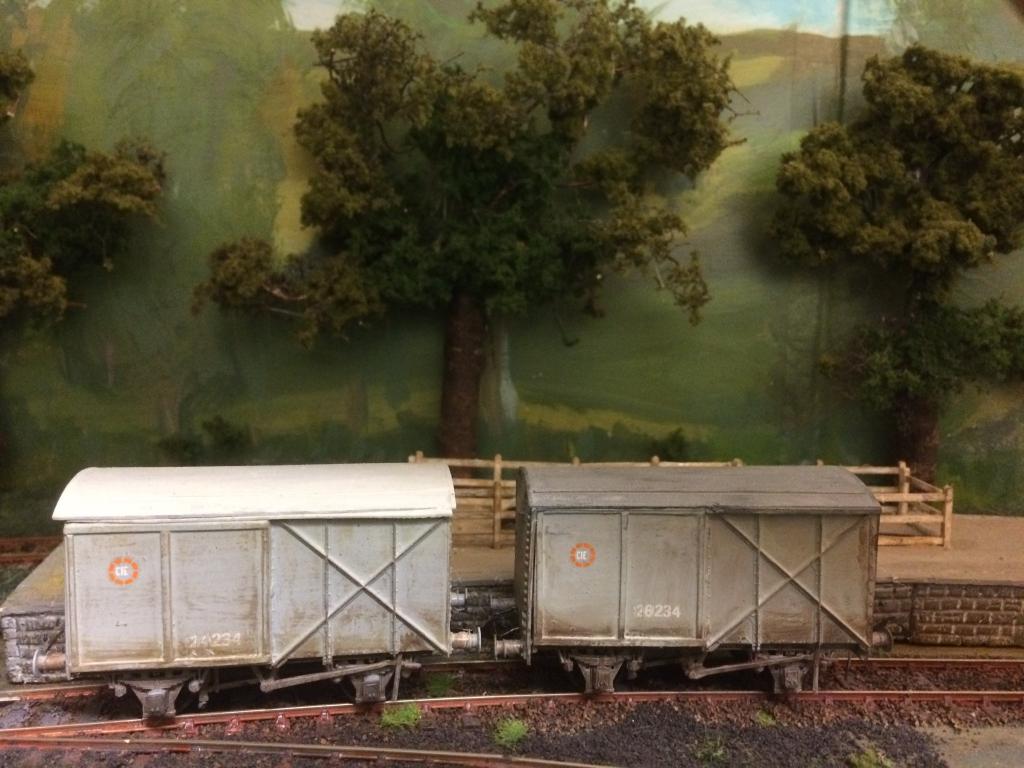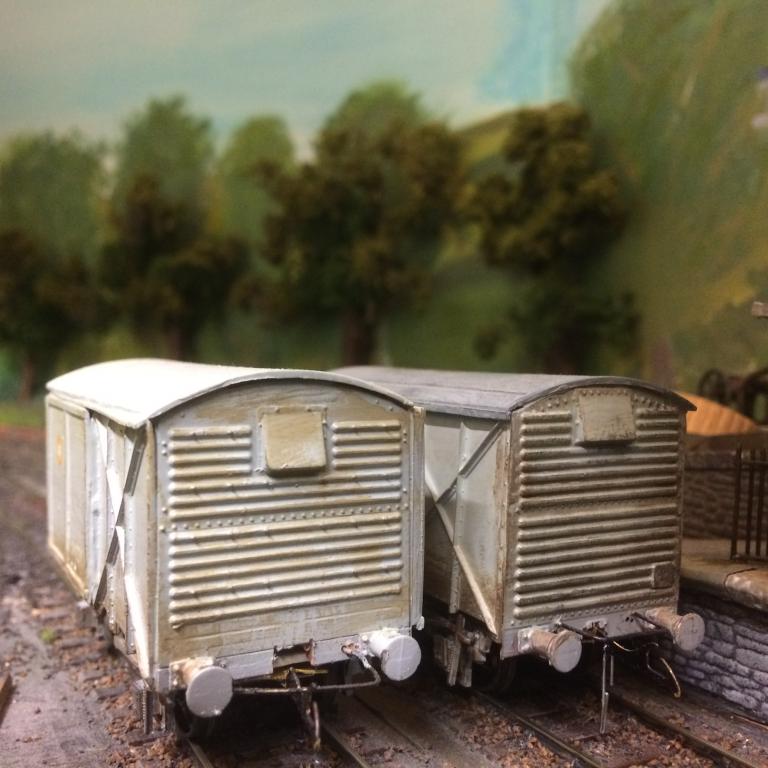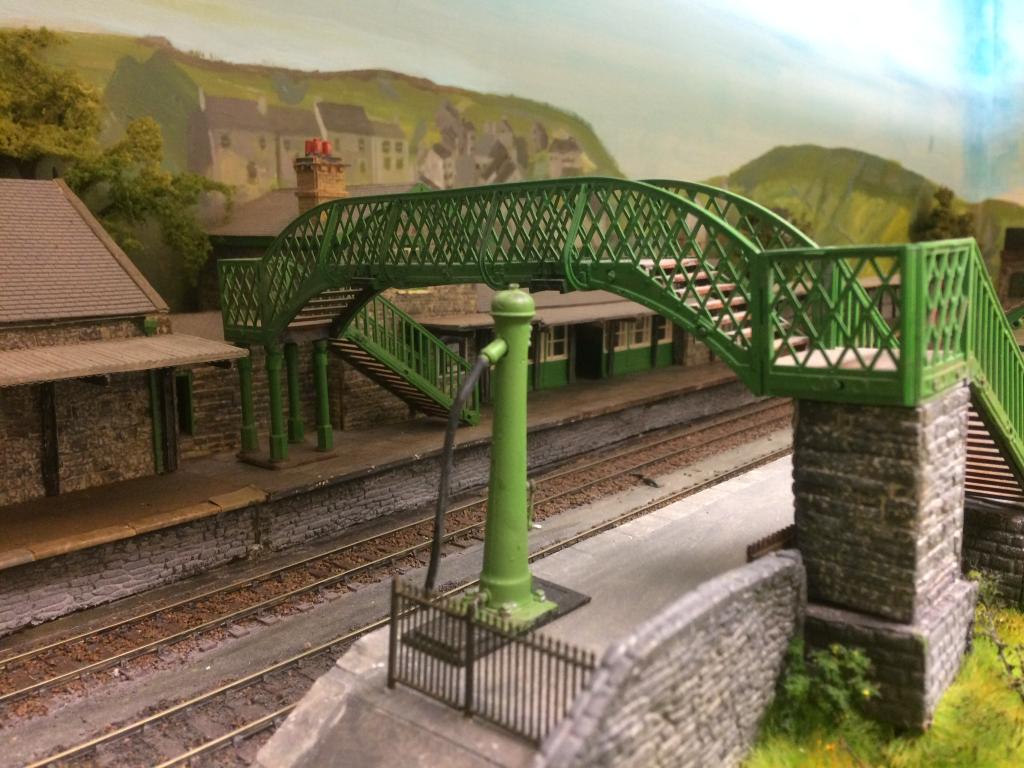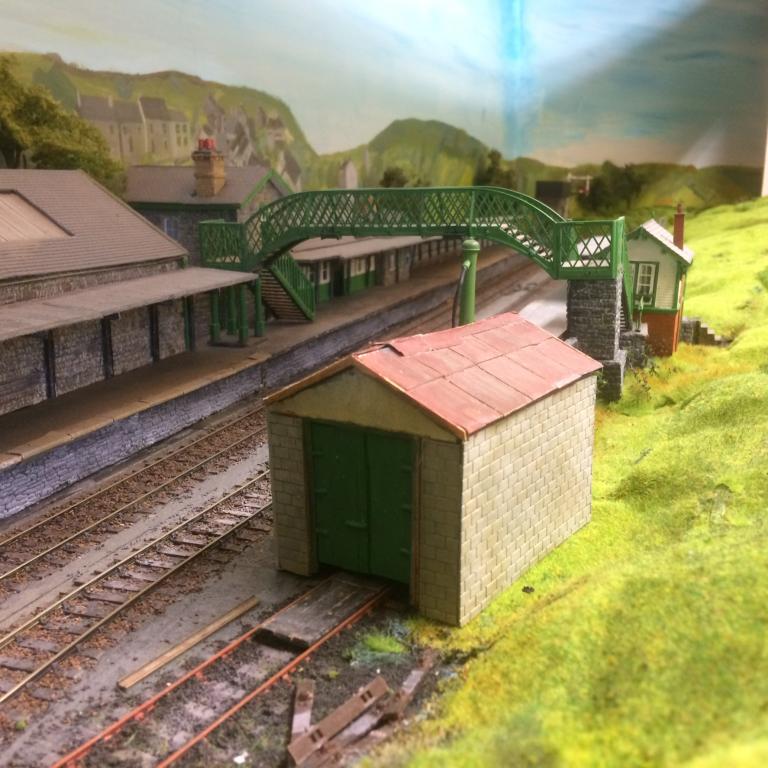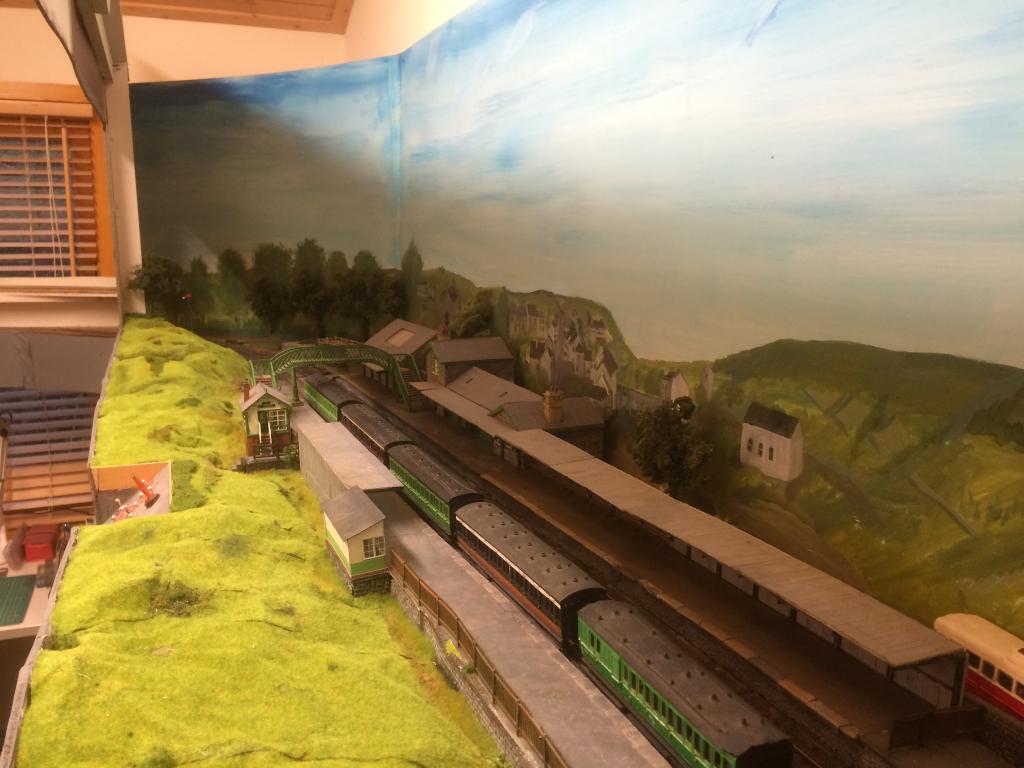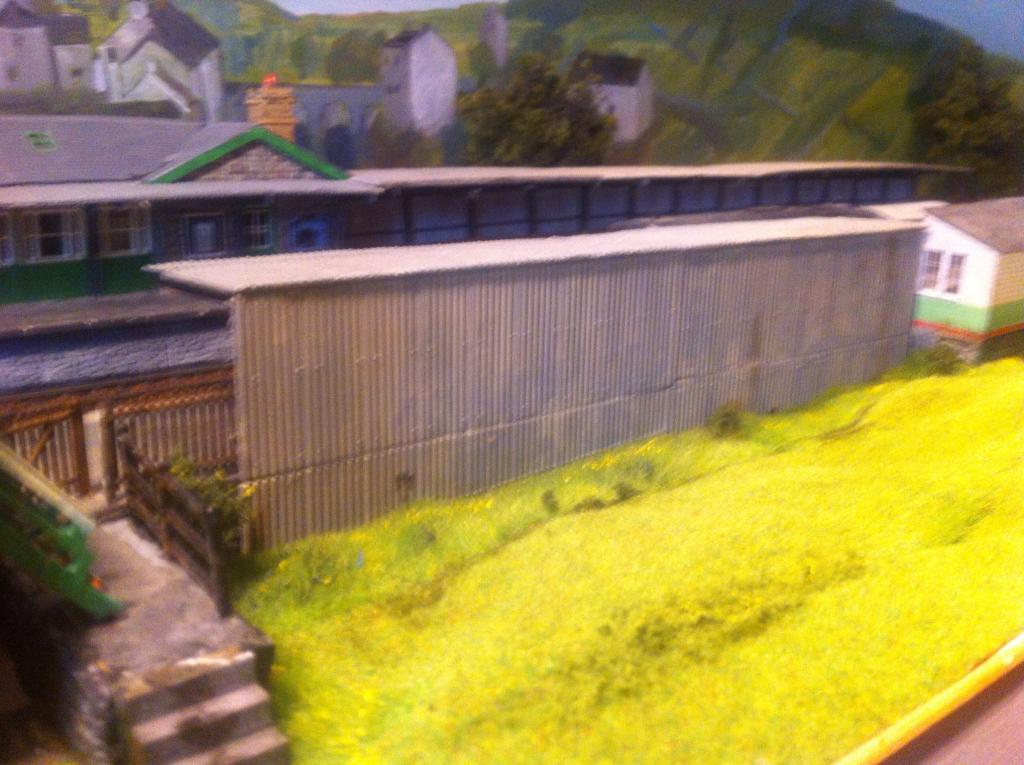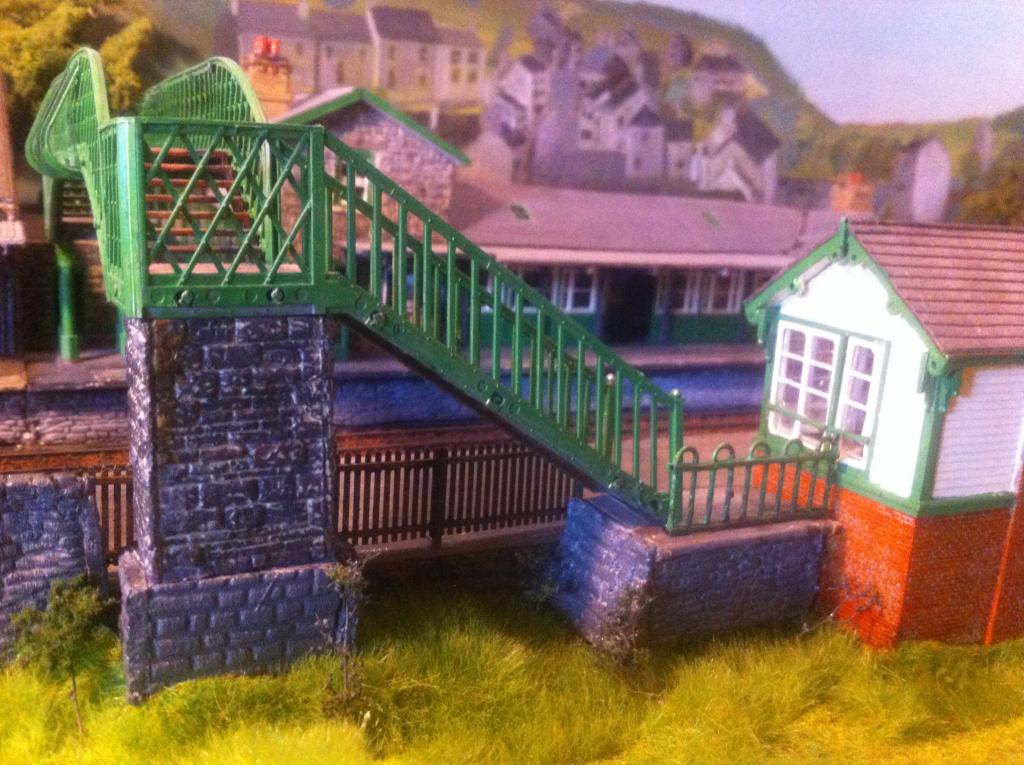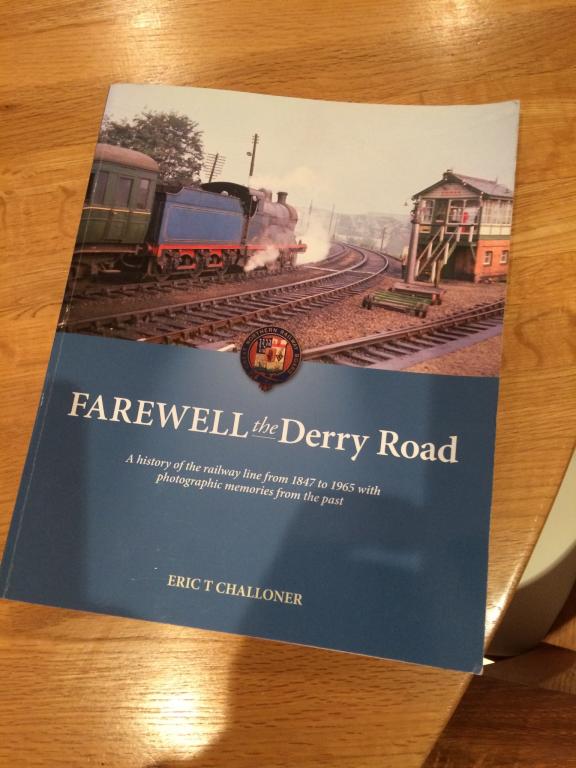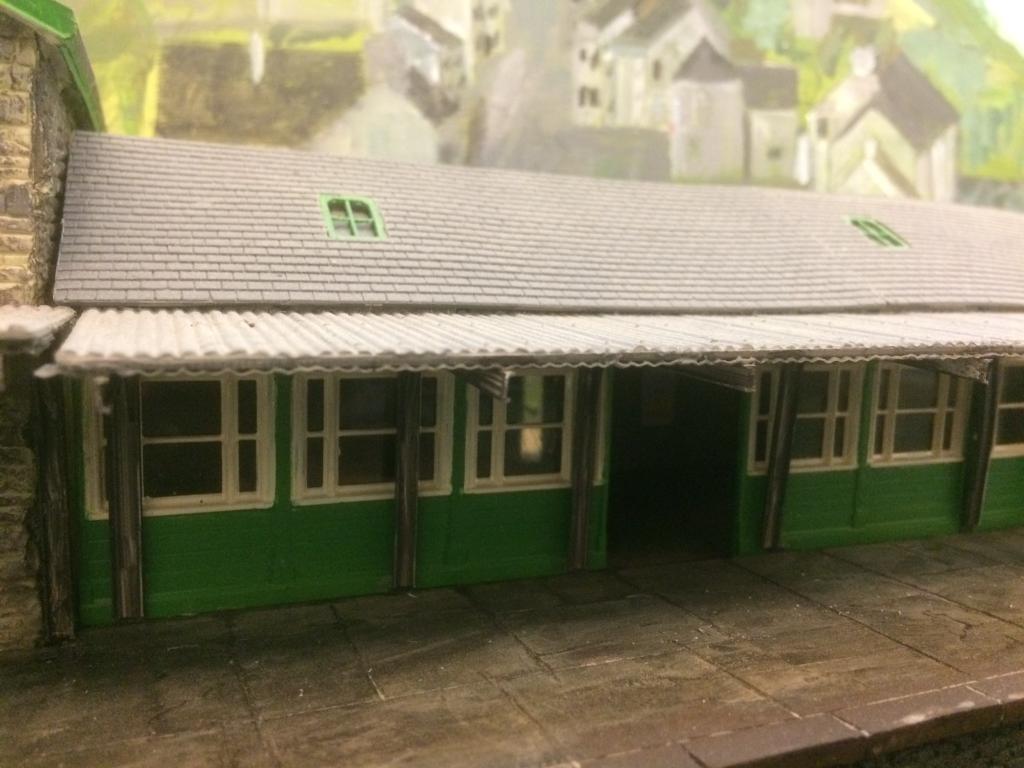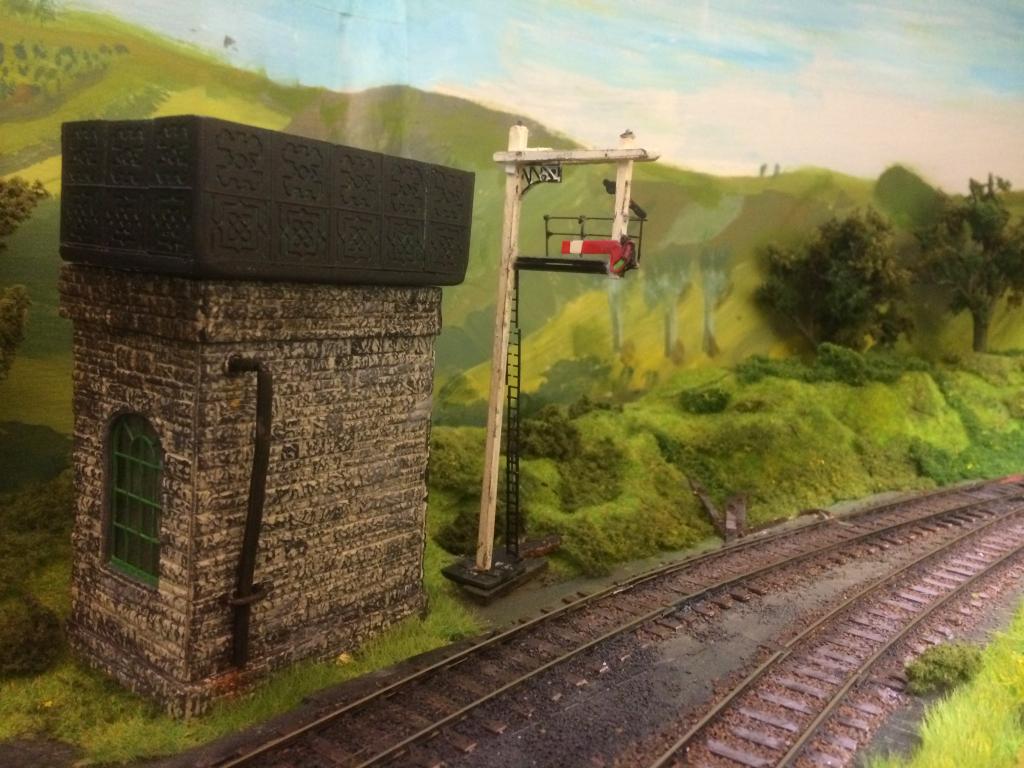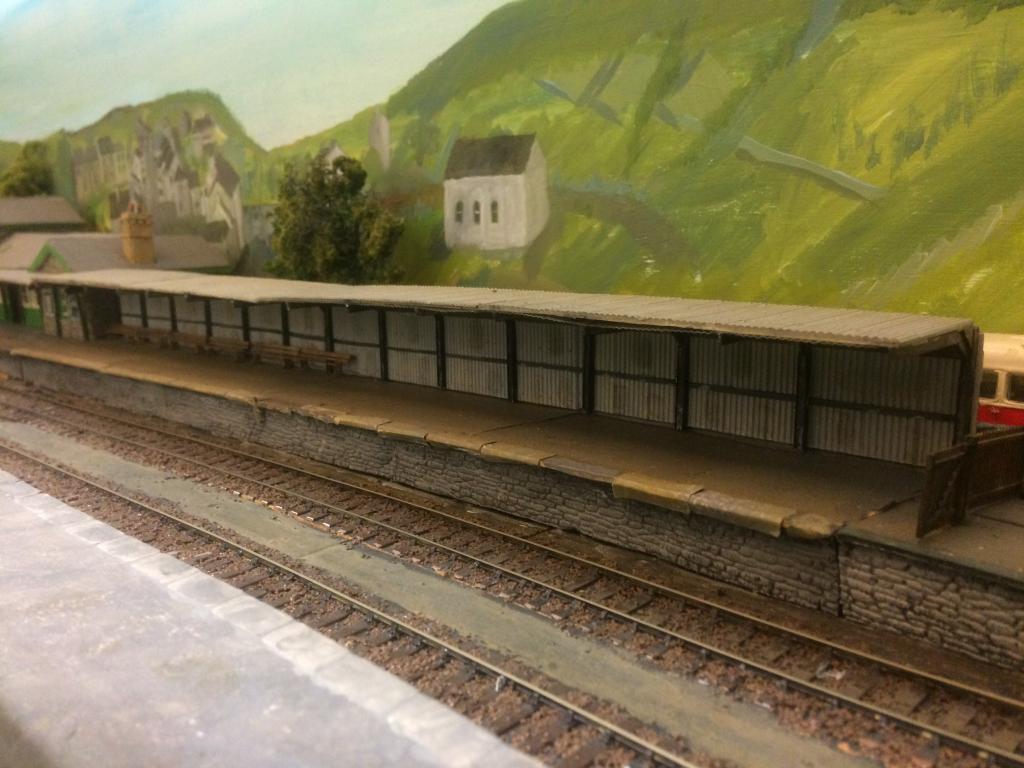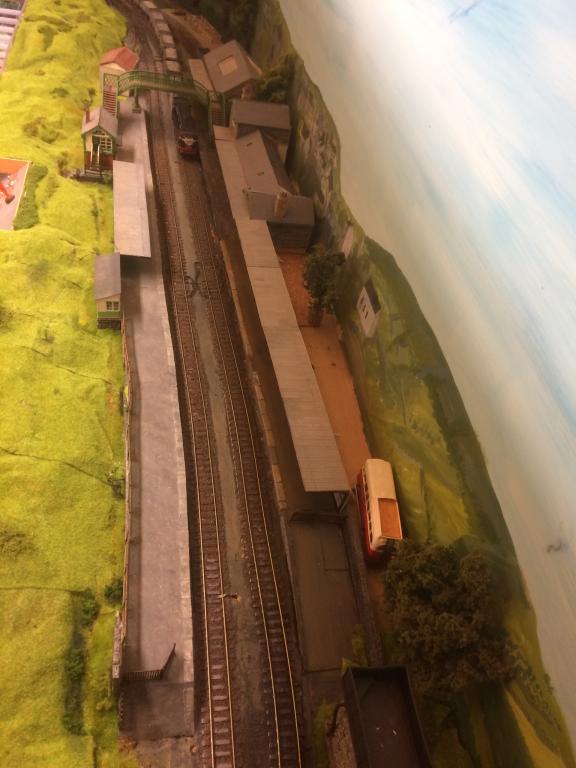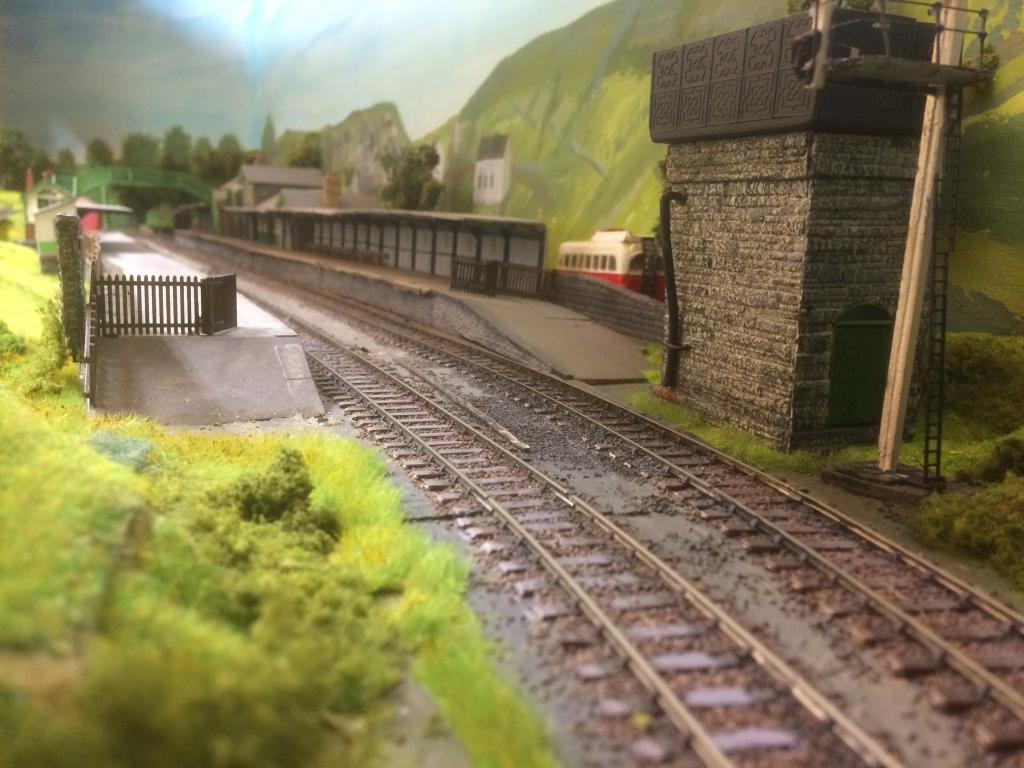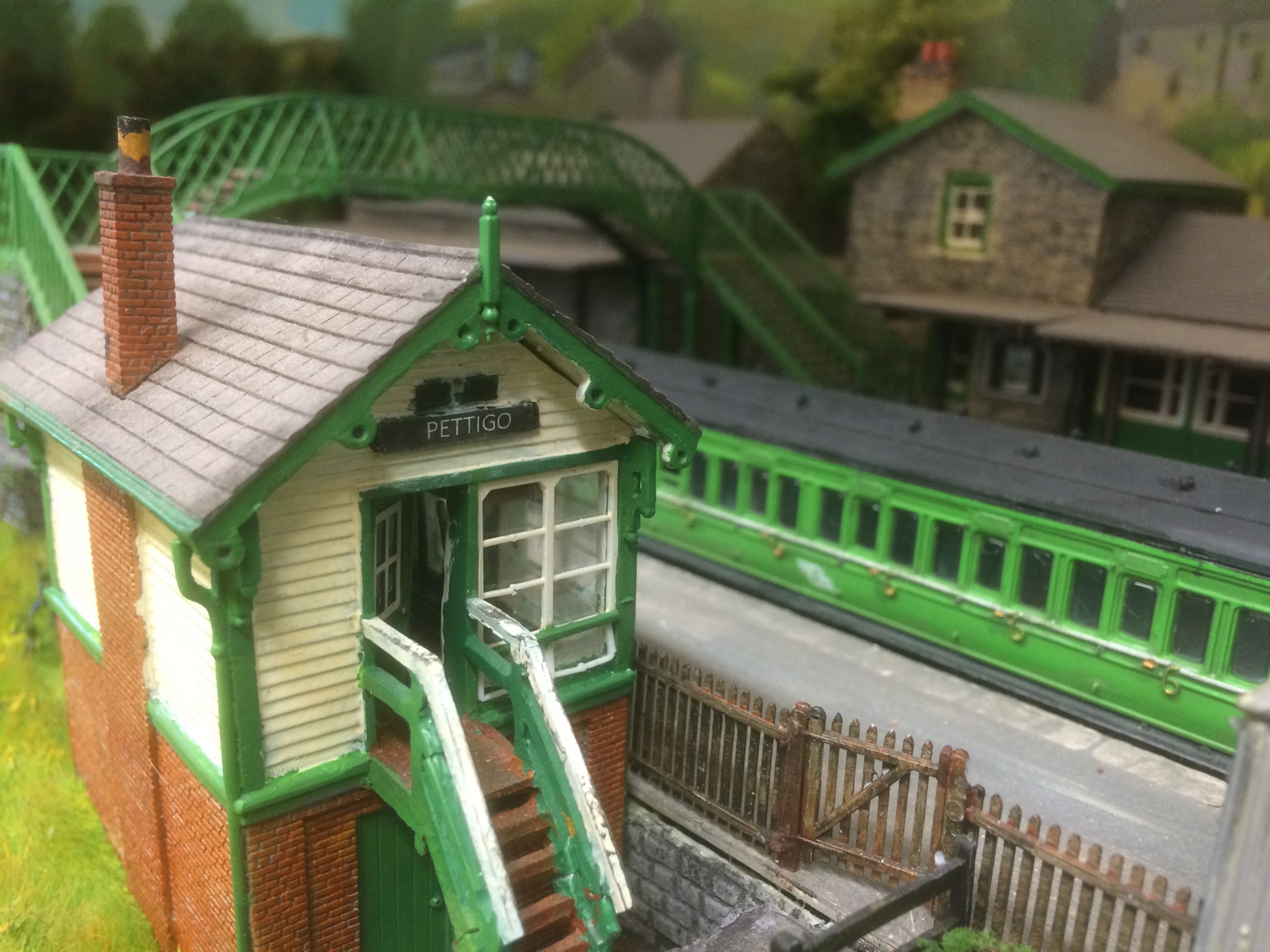
Glover
Members-
Posts
144 -
Joined
-
Last visited
-
Days Won
6
Content Type
Profiles
Forums
Events
Gallery
Blogs
Store
Community Map
Everything posted by Glover
-
I can't think that there was any particular need for horse boxes on the Bundoran branch; this part of the country is not exactly noted for breeding race horses, although a few show horses might have travelled to the Spring or horse show at the RDS in Dublin. Either way, others might have some interest in or use for this little project. It's basically the old Lima horse box, reduced in length with new ends and roof, mounted on a Mainline chassis. The end result is I think a reasonable facsimile of the GSR/CIE horse box. I built it some years ago. If I decide to keep it, it needs a repaint and decals. Cheers, Glover
-
I must say that I am delighted with the information which has been brought forward, especially by jhb and Mayner in responding to my scribblings. Thank you gentlemen. When Parkside released their kit for an LMS cattle van, I had a very close look at it. The fact that the diagonal bracing on the sides was a separate piece suggested that one problem would be eliminated. There was also the possibility of reducing the length by removing one panel either side of the door. This is the starting point (for once, I took a couple of photos while the project was in progress): This photo shows the major work required: remove one panel either side of the door and remodel the door itself. The floor/chassis also required shortening. The end result is as follows: I have slightly hidden the van on the right; somewhere along the way, I managed to get the wheelbase wrong! The bars over the upper body openings are a bit wonky: larger diameter wire the next time, I think. I have to say that this piece of kit bashing does show promise and, in the absence of a proper CIE KN, may be the only way forward. An excellent modeller of Scottish railways who goes by the name of Ben Alder on RMweb has modified a fleet of these. Obviously, less surgery is required but one idea he had was to use the internal partitions in some parts of his project. Glover
-
There is an easy route to modelling an Irish cattle van or the GNR version anyway: the Provincial Wagons kit (or RTR) from the hard working Leslie McAlister. I should say that two of these are Leslie's kits; the one on the left is the old Model Wagon Company white metal kit. Mayner has displayed four of these on his work bench ("tales from the carriage works"). I bought the kit from that old atmospheric ( the pipe tobacco!) model shop in Monck Place, Phibsboro. The 'problem' is that they are not really suited to a layout set in 1963. GNR wagons seemed to have a very short life when CIE took over, especially the cattle vans. Understandable I suppose given that the CIE vans were newer and this particular traffic was declining. Therefore, the CIE round logo on one van is highly improbable; my excuse is the very limited space for the Flying Snail. So, the search for a suitable CIE KN goes on..... Glover
-
Up to the early 1970s, cattle wagons were a very common sight on CIE. The standard CIE wagon, a KN to railway men was a distinctive vehicle, unlike anything that ran on Britains railways. This was an earlier attempt at achieving something to run in a 10/12 wagon cattle special. It's the old Mainline LNER wagon but with the doors modified. Whatever else it might be, it is not a CIE van. As Samuel Beckett said: Try. Fail. Try again. Fail better..... Glover
-
I have two guards van's, as shown below. The 30 ton van on the left is the Studio Scale Models brass kit, on a Airfix/Dapol under frame. I'm not that comfortable with brass although the problem here is the plastic roof; my fault entirely. The 20 ton van is from Irish Freight Models. I bought the body part only and fitted it to a Dapol chassis. Trying to be clever/correct, I stretched the wheel base to eleven feet. Somehow I managed to make it actually 12 feet! I have no idea how I managed this and i have to admit I've made this mistake before. Concentrate boy! The body is a resin moulding. The finish is a little rough but acceptable for a wooden bodied vehicle. Glover
-
I mentioned that I used various Parkside wagon kits in an effort to achieve Irish type wagons. I can't remember which kits I used but there was a fair amount of cross kitting, mostly to achieve the plain ends. To my knowledge, only the CIE sliding door pallet vans and the GNR bagged cement wagons had corrugated ends. None of them are quite there and, again, suffer in comparasion to the Provincial Wagons H van. As has been remarked many times, the range and quality of Irish stock has improved by leaps and bounds in recent years but it does mean that those of us who have been bashing away for years now find ourselves behind the game. Progress has a lot to answer for, I say! Glover
-
To jhb's point about the roof colour on my GN van, it is actually somewhat darker in reality; I'll take an outdoor photo on a brighter day. You may have to wait..... John Mayner is showing some superb wagons on his work bench ( " tales from the carriage shop"). Some are conversions, others old cast metal kits. The above are somewhat old technology but currently available; the Alphagraphix card kits. The one on the right is a MGWR convertible wagon. I think the idea was that the canvas centre part of the roof could be rolled back when carrying cattle. Until Leslie McAllister started up Provincial Wagons, these were one of the very few ways of achieving a realistic Irish wagon. They are tedious to build but the end result is reasonable but now overtaken by Provincial Wagons. Glover
-
John, those H vans were a fine piece of work. Your cattle wagons,KNs, were a very credible attempt to model one of the signature items of rolling stock for Irish railways. I've had a go myself, using the Parkside LMS cattle wagon kit ( ref PC87). It needs shortening but the outcome I would describe as 'not bad' and certainly worth further work. I'll put up some photos on my work bench. Glover
-
While Irish passenger trains of the 1950s/1960s, especially on CIE, could be described as a 'clattery collection of carriages', goods trains, again on CIE were quite uniform: primarily covered vans, most of them of the standard H type. I've been building up a van train over a long number of years ( some of the Parkside kits based vans were bought from Kings Cross Models which I used to visit when using the original Ryanair service to Luton). This is what I've got so far: In truth, this is probably too varied and will need a degree of weeding out, to achieve a more standardised appearance. I've shown the Palvans already so I'll focus on some of the others, starting with the 'easy' wins, in terms of modelling Irish goods vans. Between 1954 and 1956, the GNR built a series of vans to carry bagged cement, an important traffic for them given the cement plant at Drogheda. On the break up of the GNR in 1957, all rolling stock was divided equally between CIE and the UTA. This left both operations with surpluses and shortages. This led to a swop agreement between the two companies whereby CIE gained all of these wagons while the UTA received some spare BUT railcars. The Parkside British Railways 12 ton van with plywood sides ( product reference PC08A) is to my eyes a virtual replica of the GNR van. I suppose like most kit builders, I couldn't build it without some modification. I added some strengthening strips to the roof plus I added a small 'n' after the number; CIE did not renumber any ex GNR stock. I should also 'distress' the GN lettering a little more, to suggest a van which has not been repainted since new. I should say that their career as bagged cement carriers seems to have been relatively short ( the 'bubbles' took over much cement transport from 1964/5 onwards) and can therefore be used as general merchandise wagons. Leslie McAllister, Provincial Wagons, produced a run of these using a Dapol model as a basis. I think I'm right in saying that it was Leslie's first project. The next is an actual Provincial Wagons kit of a GNR 10 ton van. It's a very nice kit, with added weight embedded in the chassis. It's lettered as a GN van on one side but on the other, I've over painted the lettering, as CIE did with quite a number of GN wagons. I have to say that I'm somewhat disappointed with my own work on this. The grey is too dark ( I think I was closer to the mark with the bagged cement wagon) although the roof is not as white as it appears in the photo. Also, the weathering is a bit crude; must do better! Anyway, these two vans plus the previously featured Palvans are a relatively straight forward way of achieving Irish goods vans, suited to the 1950s to early 1970s. Glover
-
When I 'closed the book' on Pettigo this afternoon, it did occur to me that some might be interested in the back stage bits; I know I always try to peer over screens to see what's happening out back on exhibition layouts! The layout is circular, in a space about 13.5 feet by approx 7 feet. The line from the storage yard leads off in the direction of Pettigo. In other words, it represents Bundoran Junction, Enniskillen and all points east. I did actually give some thought to how much storage was required. I remember David Jenkinson making this point many years ago. The two reverse sidings are intended for less used rolling stock. I allowed enough siding length for a 5 coach Bundoran Express, a 10/12 wagon freight plus two branch line passengers; one CIE and one UTA. You might notice in both photos that there is a line in the background climbing upwards. This is/was intended to be the continuation of the line to Bundoran itself. These two photos might explain better: The entry to the storage yard is on the right, the A class is exiting Pettigo, heading towards the Junction while the coaches ( a Hornby LMS coach repainted into UTA blue and cream and a scratch built GNR coach in UTA green) are on the incline towards Bundoran. This line climbs all the way behind the Pettigo back scene and emerges at the other end: The 121s ( Old metal MIR kits on Ahern chassis; the Black and Tan one needs repainting into grey to fit the 1963 time frame) are almost at the top of the climb but I haven't actually built anything beyond this yet. The C class ( Q Kits......you don't want to know any more than that!) is on the main line while the open wagons are on the off scene section of Pettigos' goods head shunt. I would certainly support Patricks' point regarding layout height, certainly for nailed-to-the-wall-home layouts. There are additional benefits; plenty of storage space underneath and space for a workbench. This view might help. I should take this opportunity to congratulate Patrick on his layout. The American layout design approach is especially suited to modelling branch lines and, for me, is one of the most interesting and innovative layouts on this site. Noel mentioned the Railway Children. Funnily enough, I do intend to replicate something I saw in a photo many years ago: children sitting on an embankment watching the comings and goings on the railway. There are a number of photos, especially on the County Donegal narrow gauge,of children enjoying their summer school holidays in or about the trains. Certainly not to be encouraged nowadays but it seems it was a common sight, particularly on rural lines in times gone by. To jhbs' point about running rail tours, it has occurred to me to run the famous 1964 tour a year early! As always, many thanks for the kind comments. Glover
-
Thanks for the clarification jhb re the PW lorry shed. I'll finish the notes on Pettigo with a look at the back scene. This was my first ever attempt at such a project and, at approx 13 feet in length by 2 foot high, it was rather ambitious! For guidance, I used a two part series of articles by Martin Goodall in the Model Railway Journal in 2013. I followed his basic advice to trace out the main elements of the back scene from photos and then paint. I was lucky in finding, on the web, two photos taken I would say in the early 1900s from a position overlooking the station and the village. This viewpoint corresponds very closely with the layout itself. I blew these up on a photo copier until they seemed about the right scale, using my actual station building as a reference point. This view shows the main elements of the village: the main commercial centre on what is now the Republic of Ireland side with the bridge over the river Termon connecting to what the locals apparently call the High Street on the Northern Ireland side. It's official name is Tullyhommon. Churches however are scattered around in a random pre Border fashion. I curved the back scene at both ends, using flexible MDF. This helps, I think, to achieve a reasonable transition between the actual scenery and the back scene. It's obviously not a work of art but it is based on the actual location and therefore portrays the rather ordinary archicture of the local buildings and also helps to tell the railway story of this otherwise unremarkable place, hidden in an almost unknown corner of south-east Donegal. There remains some work to be done but as a first attempt ( after 40-50 years of false starts!), I have to say that I'm quite satisfied with the result. I'll update the work bench thread from time to time. Thanks for reading, Glover
-
Once again , my sincere thanks for all your kind comments. I think two more 'chapters' should finish the saga of Pettigo. The goods yard is very basic; a road into the goods shed and one on the other side of the loading bank, which also served the cattle pens. Both are accessed via a head shunt running off the up platform. This view, only available to the camera, makes the SMP Code 75 track look rather crude ( and under scale gauge!). The track to the right, line to Bundoran/storage yard is unballasted as it is not normally in view. The Peco above baseboard point motors are a result of the initial decision to operate the points using 'wire in tube' but unfortunately I couldn't get it to work. My incompetence ! As the track was laid at that stage, it wasn't possible to excavate under the points to mount below baseboard motors. The shed itself is a simple structure. I had no drawings but it was relatively easy to get the proportions about right using the available photos. The structure itself is still standing, as is the station building but now private property. We exit the layout at the signal controlling onward progress towards Bundoran. The GNR often mounted signals on telegraph poles. Such was the case at Pettigo. The signal arm (non-working) is from a Studio Scale Models etch. I'll finish off later with some notes on the back scene. Regards, Glover
-
There may actually have been four or five variants Kirley! While looking for photos to respond to your point I came across a Flickr site with two photos of these vans: one with a corrugated end more or less as I have modelled and one with what seems to be bracing on a plain end. However, the doors on both are different to each other and different to what I have modelled. I thought these things were straight forward! Not sure how to link but if you put "Flickr Brian Flanigan Irish Rolling Stock" into Google, it should bring the site up immediately. Apologies for the slightly involved directions. Regards, Glover
-
Correct Nelson. They are MJT BR heavy duty wagon buffers, 1 ft 8". Product code is 2350. They have a footstep on one side but I usually rotate them so that this feature is on the bottom and not visible. Cheers, Glover
-
On my layout thread, Pettigo Co Donegal, JHB mentioned the ever shortening list of Irish wagons which are not available, either RTR or as kits. One was the Palvan. This can actually be made relatively easily, using the Parkside Dundas BR Palvan. I seem to recall that John Mayner has also followed this route. In fact, I've built two but don't ask me why they are different shades of grey; I possibly built them at different times. That might also explain the difference in buffer heights ; damm modern cameras! The major change is to the sliding door although I fitted larger buffers; MJT BR buffers. Reports from the time say that there was a shortage of components to manufacture the ends and hence there were three variations. I have attempted to demonstrate this point. These vans were introduced in 1964 and hence are marginally out of period for my layout which is set in 1963; serious offence! I use S&W couplings on most of my freight stock, which might explain the hole at the end of one van; never noticed it before! Glover
-
One of the challenges, and pleasures, of modelling a real location is trying to find items which best represent the prototype. This water crane at the Bundoran end of the Down platform is a Mikes Models kit of a L & Y crane, painted in CIE green. You might also spot some railings at the end of the platform. These are very visible at the Junction end of the platforms and I have included them. However, I only noticed recently that they were also at the Bundoran end. Strange how you can look at photos over and over again and still see something new. I originally thought that they were to prevent passengers crossing the tracks at the platform ends but I'm now inclined to believe that they were intended to prevent passengers evading the Customs men. Pettigo was preceded and succeeded by stations in Northern Ireland ( Kesh and Castlecaldwell) and was thus, in the parlance of the time, a Frontier Post. Similar fencing also appears at Ballyshannon. On the plan of Pettigo in Fermanagh's Railways (Friel & Johnston) there is a very short siding which runs into what is described as the PW Lorry Shed. I've never seen any photos of any such vehicle but I have read that it was used every summer by the GNR bus mechanic who serviced the fleet of buses which the GNR laid on to transport pilgrims from Pettigo to the embarkation point for the Island in the middle of Lough Derg. This little structure has caused me some grief! I have only one b/w distant photo of it and thought originally that it was brick built and made it as such. It might appear in this guise in some photos. However, I now think it more likely to have been constructed from concrete blocks and so, after quite a while trying to track down a packet of Wills plastic sheets, have rebuilt it. Can't say that I'm very happy with my representation of the colour of concrete. The roof is from something I built years ago but I suspect it should be mineral felt or tiles. All in all, I should probably have a second go at this, possibly with the shed doors open and a mechanic in oily overalls. Glover
-
Before moving down to the Bundoran, goods yard end of the layout,we'll take a quick look at the Down platform. There are only three structures on this: a typical GNR waiting shelter, a short section of corrugated awning (similar to that on the Up platform) and the signal box. All are viewed on the layout from the rear. The waiting shelter is a Alphagraphix card kit. I had intended building it from Grand Junction plastic panels but the kit provides a ready made solution. Not necessarily a short cut; these kits do require a lot of precise and tedious cutting. I have built a number of their wagon kits. The corrugated awning is a pretty utilitarian structure but does illustrate how the station evolved over times to meet the needs of passengers. The signal box is that produced by Bachmann Scenecraft a few years ago, primarily for sale through Irish retailers. It is, to my eyes, a replica of the standard GNR box, although I modified the windows and added an interior, which can't of course be seen! Why do we do these things? The footbridge ( which I believe was dismantled from some where else on the GN system) is the Hornby model but reduced from its sky scraper height. It is also mounted on a stone pillar on the Down side, as per prototype. The real thing had no intermediate landing but this is the best solution I could find. Glover
-
To Leslie, I did see Ballyconnel Road at the model railway exhibition in Cultra a few years ago and also the recent article in the Model Railway Journal. It's a superb model; subtle, no stage Irishness - just a country station as it might have been. David Holman has achieved the same with Arigna Town, in particular the background everyday buildings. Mayner: I wasn't aware of the model of Cliffony. I have a friend with family connections to that area. The idea of modelling a Sligo to Bundoran line as MGWR is an interesting one and not something I had thought off. I've always had a notion of building an imaginary station located at Drumcliffe, with the magnificent Ben Bulben in the background and the church where William Butler Yeats is buried. The station could feature representations of one or two Irish poets! And, a 'horseman passing by' on the road. To Leslie's comment about my train set provoking discussions on high finance, I say fire away lads; to a city boy, the cost of moving moo cows around the country is a somewhat remote subject! Having said that, it was vital to railways, especially in the West of Ireland. The Sligo Leitrim was essentially a cattle shipping line. I'll do some notes at a later stage on my efforts at modelling a cattle special. Now I'll get back to putting up some further photos of Pettigo. Regards, Glover
-
The photos are in Farewell the Derry Road. Yes, the AEC's are CIE, in a mix of black & tan and green. One of the photos shows the CIE set crossing a UTA set, at Dungannon! Any more wishes?! Cheers, Glover
-
Leslie, sorry that I overlooked your comment regarding passengers. The crowds caused by the arrival and departure of the Express would indeed bankrupt me. It might also be criticised by the less knowing as totally unprototypical for a small country station.....little do they know! At the moment, there are no figures on the layout. I've drawn up a list of Montys Models figures to purchase (and paint....that's not as easy as it was 20 years ago!)but haven't bought them as yet. On the question of buses, I think I'm right in saying that, given the protectionist nature of those times, that the services would have been operated by CIE, given that the journey would have been within the ROI. Therefore, a mix of ex GNR Gardiners and CIE equipment. That's why I've placed a bus behind the shelter, in CIE cream and Crimson, to suggest this. Again, many thanks, Glover
-
I'm delighted that my little layout has generated such informed and interesting comment. I had forgotten that the Bundoran Express lived on post the closure of the Bundoran branch, in a form at least. This was the Pilgrim train which ran from Dublin up the Derry Road to Omagh. Pilgrims were bused from there to Lough Derg. In Eric Challoners' superb book, "Farewell the Derry Road" (Colourpoint), there are colour photos of B153 and A53, in green operating this train. I wonder if the locals thought the latter was the Turf Burner! There are also b/w photos of AEC railcars, led by 2635, working the train. I think I'm right in saying that this train operated in the summer, to the end of the Derry Road. Regards, Glover
-
Thank you both John and JHB; you have in a way anticipated my next posting which was intended to pick up on Kirleys' point about modelling one period in time. A little background ( and then some snaps!). I've always wanted to model Irish railways; it's what I'm familiar with. I also wanted to model that transition period after the demise of the GNR with the overlap between CIE and UTA. I was always torn between modelling urban or rural railways. I'm Dublin born and bread. I do sometimes say that 'if you've seen one field, you've seen them all!'. Give me the crime and the grime any day . Being a child of the early 1950s, I do have some memories of the GNR. The blue and cream railcars and (some) coaches; no memory of the varnished mahogany ones. I also remember the GNR buses in Dublin. And I travelled,twice, on the Howth tram. But that also means that many of my earliest memories are of railcars and diesels. So, the era was always pretty well established; I just had to figure out where. It's taken me years and many aborted layouts to arrive at this point. To be honest I can't really remember how I ended up modelling Pettigo but I'm glad I did. The layout is set in the summer of 1963. Why so precise? Well, the line actually closed in 1957 but, to Johns' point, there was I understand an opportunity within the Dáil Éireann / Stormant legislation which created the Great Northern Railway Board for one Government to take over a line that crossed the border. Certainly, there was the usual huffing and puffing in the Dail at the time. But, it was possible... 1963 because the GM 141s arrived in late 1962 and were to be seen virtually everywhere by mid '63. And Murphy Models do a superb model. Therefore, we can imagine that JHBs father was out with the paint brush by then. The station building is based on plans for some English station or other which featured in an old model magazine. The proportions seemed similar to Pettigo. The wooden front is from the Grand Junction range ( sold by Parkside Dundas) and are based on LNWR designs; don't tell me JHB that the GNR used a different type of nail! Funny you should mention an extension to Sligo John. The space and plan allows for building Bundoran but I've kind off gone off it. Apart from the superb loco shed, it was a rather dull place....the station that is. I have in mind a GNR station in Sligo instead. An assumption would be that the notoriously belligerent Midland Great Western refused access to their station. It's for the future but I have to make a confession here: I prefer modelling trains etc rather than running them! We'll move down the platform next time....I've just realised I've missed a big chunk of Newsnight. Cheers, Glover
-
By the way, I love the Drew Donaldson story Leslie. The fact that it depends on a certain knowledge of GNR loco classes makes it all the better; a sort of 'in' joke. And, you have picked a fine name for your house. Glover
-
Many thanks gentlemen for your kind comments. May I take some of those comments to add a little more detail? I agree David that it's a case of "shame about the track gauge" but I simply don't have your engineering skills. It did concern me for many years but the fact that the layout is at eye level (one of the best ideas to come from North America and promoted by Iain Rice) plus most views are side-on allows me to largely ignore it. Track is SMP with Peco Code 75 points. Weshty mentioned the water tower. The only watering facilities between Bundoran Junction and Bundoran itself were at Pettigo. They were certainly appreciated by the Down Bundoran Express which ran 50 miles non-stop from Clones. The structure was built from Wills plastic sheets, the window (I think; I can never remember how I actually made a lot of things) came from the old Airfix loco shed. The water tank is one of those plastic boxes for screws etc but covered in paneling from the Wills Victorian Gents. I knew I'd find an appropriate use for that kit one day! The signal was positioned behind the water tower and hence cantilevered out to be visible to drivers. I knocked it up from bits and pieces of wood; I suspect chop sticks! The actual signal arm is an SSM product ie Weshty. I should say that most structures are based on photos in the Colourpoint book "Fermanagh's Railways" by Charles Friel and Norman Johnston. You're right Leslie about the shelter; it was horrid! It was added I believe in the early 1950s at the request of the Lough Derg clergy as a small act of kindness to the pilgrims returning from "doing the island" : two nights/three days of living on black tea and dry bread, in their bare feet. Different times..... Most of the platform, built largely from cardboard is from a previous layout and looks a bit scruffy, in the photos anyway. The shelter was built from corrugated plastic and Evergreen girders. It needs more seats ( 'sheer luxury,lad'). Cheers, Glover
-
I nearly broke my neck taking this photo; the layout is at eye level hence this required standing on a step ladder with no real opportunity to see what I was photographing. This overview shows the Bundoran Junction end of the layout, looking towards Bundoran. Trains heading to the terminus would of course enter on the left hand side track. This is a track level view. In railway terms, Pettigo's main claim to fame is that it served as the transfer point from train to bus for pilgrims heading to the privations of Lough Derg; the remaining passengers were heading for the fleshy delights of Bundoran (or so I read somewhere). Must have been great fun on the train with a mixture light that! The bus is intended to represent this activity. It's actually a very old Dinky Toys bus, originally lettered I think for BOAC ( British Overseas Airways, for those over a certain age). I added a roof box to it, for luggage etc. Cheers, Glover
.png.c363cdf5c3fb7955cd92a55eb6dbbae0.png)
